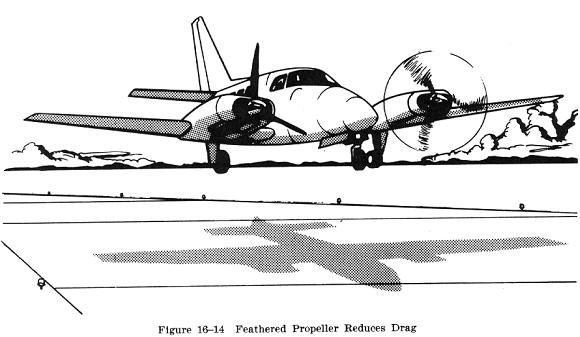
Essentially, an engine out approach and landing is the same as a normal approach and landing. Long, flat approaches with high power output on the operating engine and/or excessive threshold speed that results in floating and unnecessary runway use should be avoided. Due to variations in the performance, limitations, etc., of many light twins, no specific flightpath or procedure can be proposed that would be adequate in all engine out approaches. In most light twins, however, a single engine approach can be accomplished with the flightpath and procedures almost identical to a normal approach and landing (Fig. 16-14). The light twin manufacturers include a recommended single engine landing procedure in the airplane's operating manual.

During the checkout, the transitioning pilot should perform approaches and landings with the power of one engine set to simulate the drag of a feathered propeller (zero thrust), or if feathering propellers are not installed, the throttle of the simulated failed engine set to idling. With the "dead" engine feathered or set to "zero thrust," normal drag is considerably reduced, resulting in a longer landing roll. Allowances should be made accordingly for the final approach and landing.
The final approach speed should not be less than Vyse until the landing is assured; thereafter, it should be at the speed commensurate with the flap position until beginning the roundout for landing. Under normal conditions the approach should be made with full flaps; however, neither full flaps nor the landing gear should be extended until the landing is assured. With full flaps the approach speed should be 1.3 Vs0 or as recommended by the manufacturer.
The pilot should be particularly judicious in lowering the flaps. Once they have been extended it may not be possible to retract them in time to initiate a go-around. Most of the light twins are not capable of making a single engine go-around with full flaps.